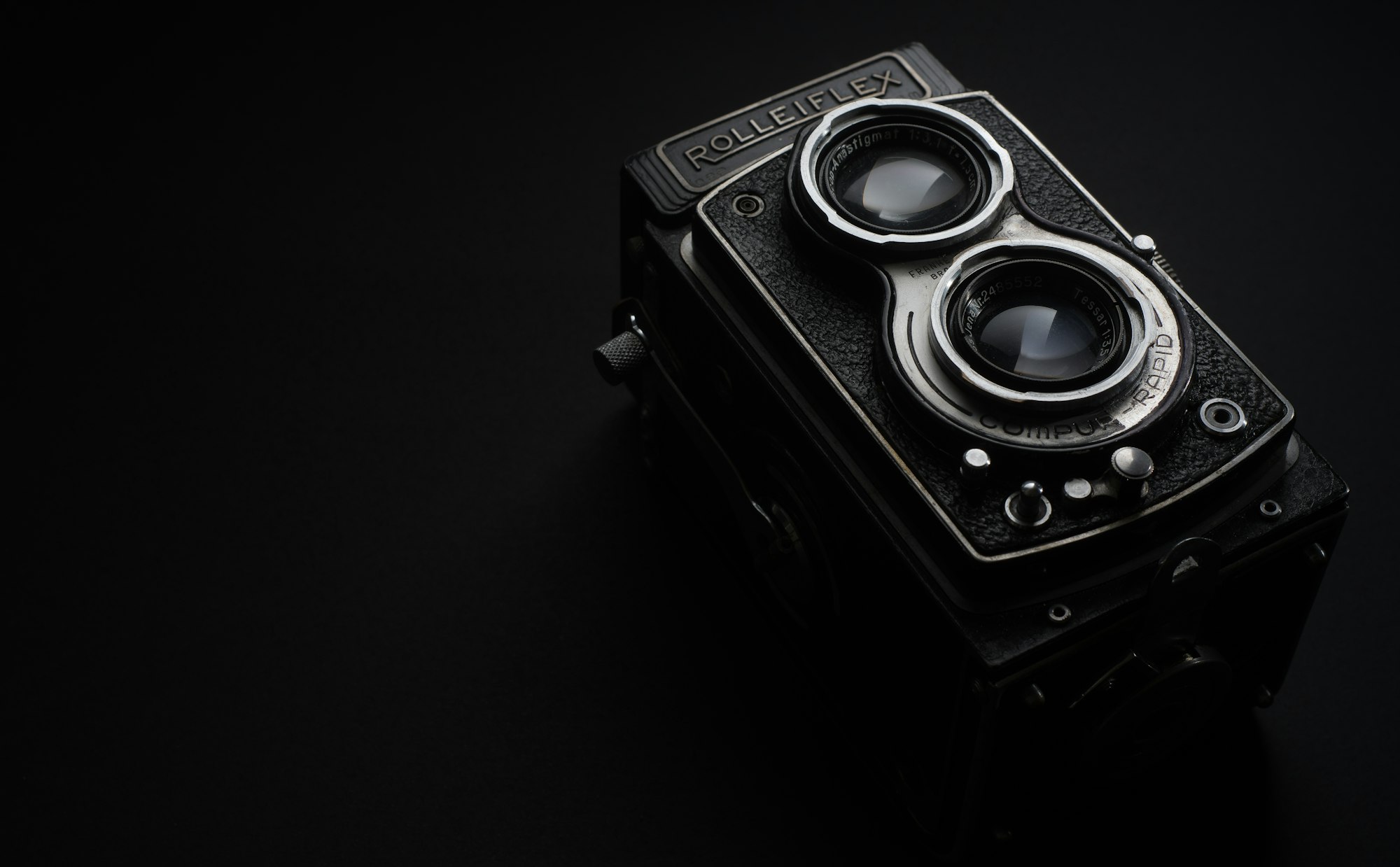As a professional photographer in Stoke-on-Trent, I have always been interested in the history of photography. But what few people know, is that the invention of photography has its roots in Stoke-on-Trent, where a pioneering figure played a crucial role in its development: Thomas Wedgwood.
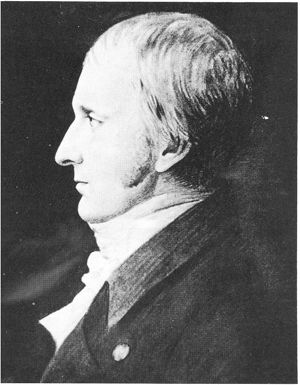
Thomas Wedgwood (1771-1805) was an English inventor and early pioneer of photography. He was born in Etruria, Staffordshire, England, into the famous Wedgwood pottery family. He was the third son of Josiah Wedgwood, the renowned potter and entrepreneur.
Although overshadowed by his father and the pottery industry that the family is so well known for, Thomas Wedgwood was interested in science and art from a young age, and he became fascinated by the possibility of capturing and preserving images using light. In the late 1700s, he began experimenting with various methods of creating images, including using various materials coated with silver nitrate and exposing them to light.

Wedgwood's most significant contribution to photography was his development of the first known photographic process. He experimented with a variety of materials, including white leather, paper, and ceramic plates coated with silver nitrate, and used sunlight to expose the plates. He found that the images he created were faint, and would quickly fade away. Nevertheless, his work laid the foundation for later photographic processes.
Wedgwood's experiments were largely unsuccessful due to the limitations of the technology available to him at the time. However, his pioneering work paved the way for future generations of photographers and led to the development of more advanced photographic processes in the 19th century.
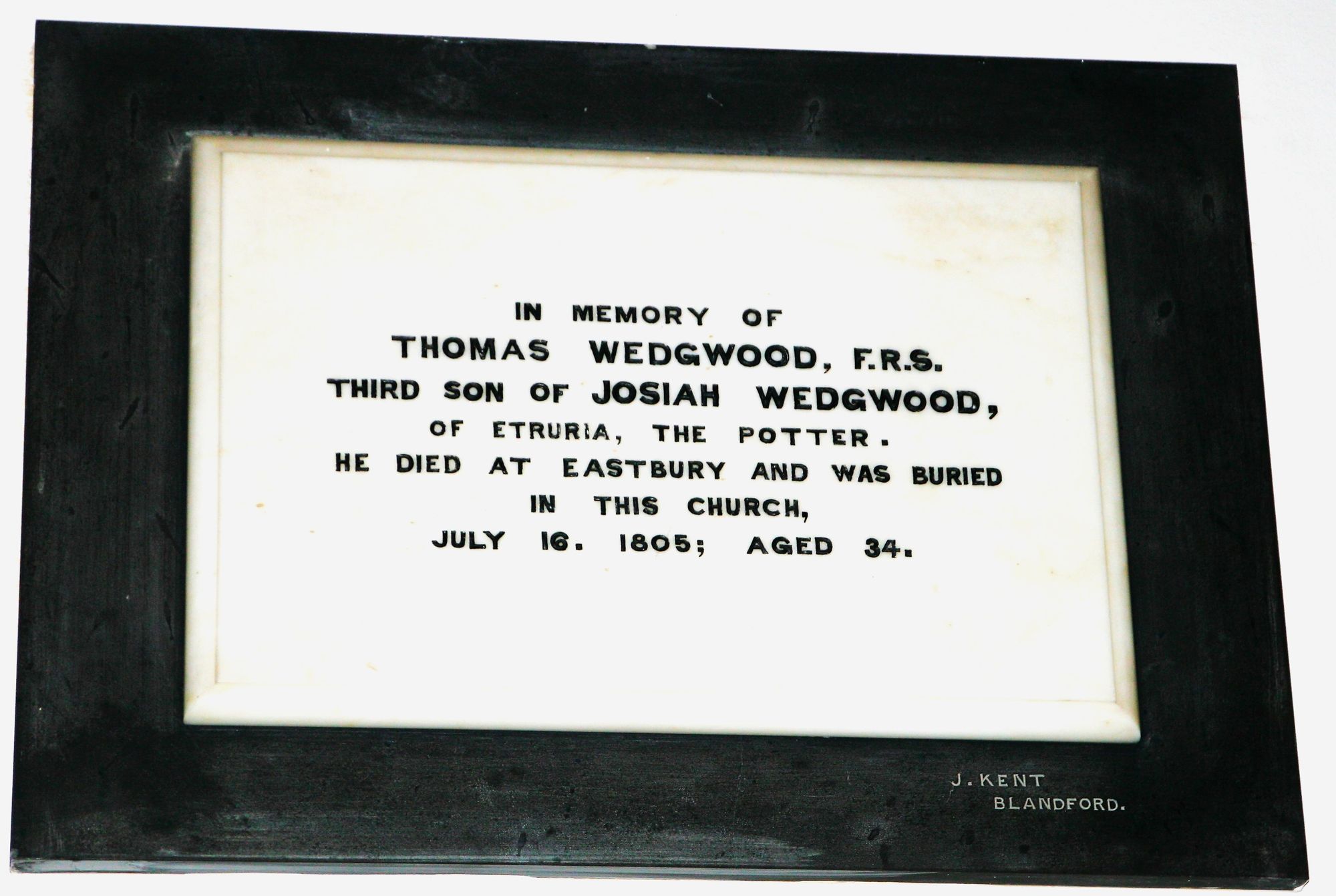
Thomas Wedgwood suffered from poor health for much of his life. He was plagued by various ailments, including tuberculosis, rheumatism, and kidney disease. In fact, it was his poor health that ultimately led to his premature death at the age of just 34 in Dorset. He is buried in St Mary's Church. Tarrant Gunville and along the south wall is a marble tablet commemorating him. Despite his short life, his contribution to the history of photography was significant, and he is remembered as one of the earliest pioneers in the field.

There is a letter dated around 1799 from James Watt to Josiah Wedgwood II which is a significant historical document that sheds light on the collaboration and exchange of ideas between these two influential inventors and businessmen.
In the letter, which is held in the archives of the Wedgwood Museum in Stoke-on-Trent, England, Watt thanks Wedgwood for his instructions regarding silver pictures, a process that involved coating paper or other surfaces with a solution of silver nitrate and exposing it to light to produce a photographic image.
Watt expresses his interest in the process and indicates that he will conduct some experiments with it when he is back home. The letter demonstrates the spirit of scientific inquiry and experimentation that characterized the work of both Watt and Wedgwood, as they sought to push the boundaries of their respective fields and develop new technologies and techniques.
The correspondence between Watt and Wedgwood on the topic of silver pictures is particularly significant in the history of photography, as it highlights the early experiments and discoveries that laid the foundation for the development of this important medium of visual communication.
Today, the letter is regarded as an important historical document and is valued for its insights into the work and collaboration of two of Britain's most influential inventors and entrepreneurs.
Wedgwood's experiments involved coating paper or leather with a solution of silver nitrate and exposing it to light to create a "latent image." He then used a solution of common salt to develop the image, producing a visible picture. The resulting images were rudimentary and lacked detail, but they were the first known examples of what would later be called "photography."
Although Wedgwood's technique was not immediately successful, it laid the groundwork for later photographic processes and was an important step in the development of photography. This letter to Watt is a valuable historical document that provides insight into the early days of photography and the scientific curiosity that drove inventors like Wedgwood to explore new frontiers in imaging and representation.
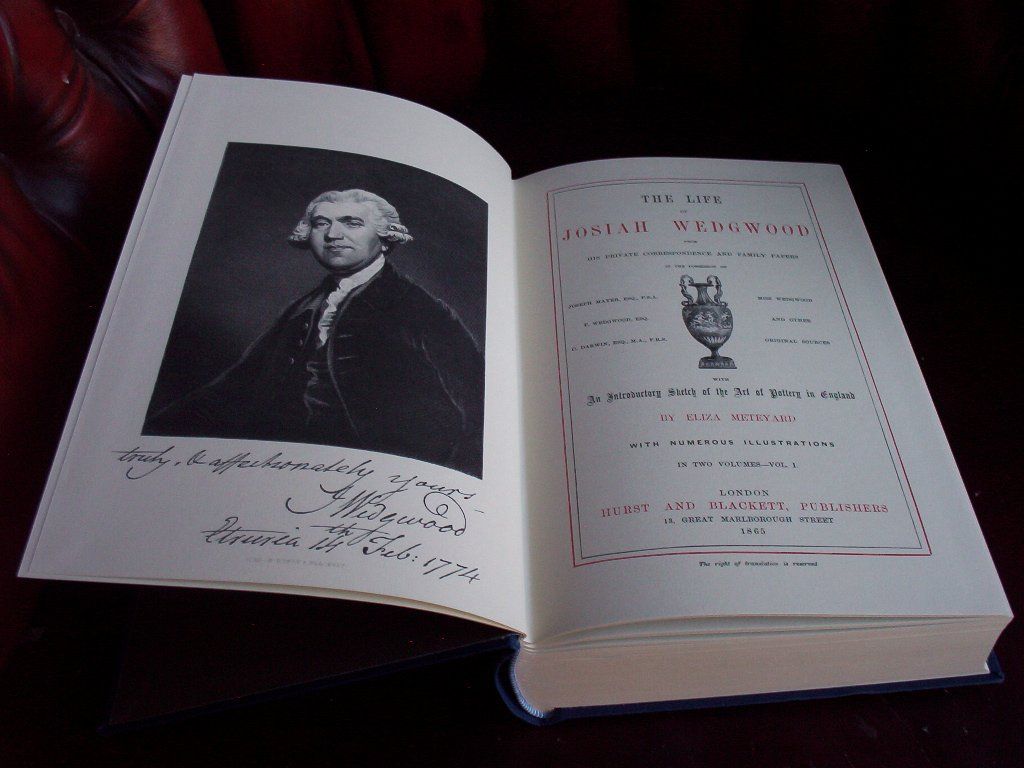
In the biography "The Life of Wedgwood" by Eliza Meteyard, there is a description of a breakfast table scene created by Thomas Wedgwood using his photographic experiments. According to the book, Wedgwood created an image of a breakfast table scene by placing a sheet of white paper on a table and arranging various objects, such as a teapot, cups, and plates, on the paper. He then exposed the paper to light, creating a silhouette-like image of the objects.
This scene was one of Wedgwood's earliest experiments with photography, and it demonstrated the potential of the medium to capture and preserve images of everyday life. Unfortunately, none of Wedgwood's original images have survived, so we do not have a visual record of this particular breakfast table scene. However, the description of his experiment provides insight into Wedgwood's early explorations of photography and his interest in using the medium to capture the world around him.
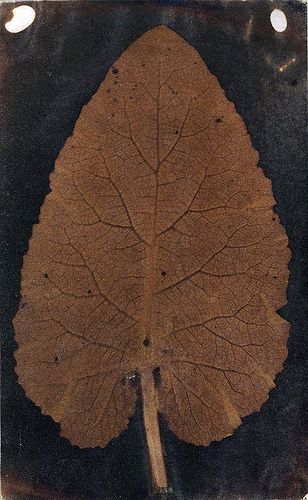
There was a photogram of a leaf that was discovered in 2008 and was claimed to have been created by Thomas Wedgwood. The photogram was found in the archives of the Royal Institution of Great Britain, where Humphry Davy worked and where Wedgwood was known to have conducted some of his experiments.
The photogram is a negative image of a leaf, created by placing the leaf directly onto a piece of paper that was coated with silver nitrate and then exposing the paper to light. The areas of the paper that were covered by the leaf blocked the light and remained white, while the areas that were not covered by the leaf were exposed to light and turned dark.
The photogram was believed to have been created by Wedgwood sometime in the late 1700s or early 1800s, although the exact date of its creation is not known. It is considered to be one of the earliest surviving examples of photography, predating the work of other early pioneers such as William Henry Fox Talbot and Louis Daguerre.
However, there has been some debate among scholars as to whether the photogram was actually created by Wedgwood or whether it was the work of someone else. Nonetheless, the discovery of the photogram has sparked renewed interest in Wedgwood's work and his contributions to the development of photography.
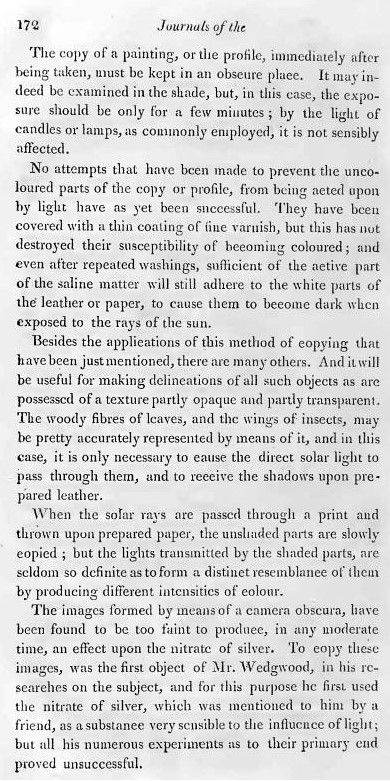
While undergoing treatment for his illnesses at the Pneumatic Clinic in Bristol, Thomas Wedgwood met a young chemist named Humphry Davy (1778–1829). Davy was impressed with Wedgwood's work and wrote about it in London's Journal of the Royal Institution (1802). The paper, titled “An Account of a Method of Copying Paintings upon Glass, and of Making Profiles, by the Agency of Light upon Nitrate of Silver, with observations by Humphrey Davy. Invented by T. Wedgwood, Esq.,” detailed Wedgwood's procedures and accomplishments, as well as Davy's own variations of them. However, it's worth noting that in 1802, the Royal Institution and its Journal were not as esteemed as they are today.
In the article, Davy describes Wedgwood's experiments with coating paper or leather with a solution of silver nitrate and exposing it to light to create a "latent image." He then used a solution of common salt to develop the image, producing a visible picture. Wedgwood found that the resulting images were fragile and prone to fading, but he was optimistic about the potential of the technique. He wrote:
"The colours which it represents are not those of nature, but it is capable of giving faithfully the figure of any object, which has been made to intercept the luminous rays that proceed from it."
The article was significant because it was the first public record of a method for producing photographic images. It caught the attention of other scientists and inventors, including the Frenchman Nicéphore Niépce, who would later build on Wedgwood's work to develop the first permanent photographic process.
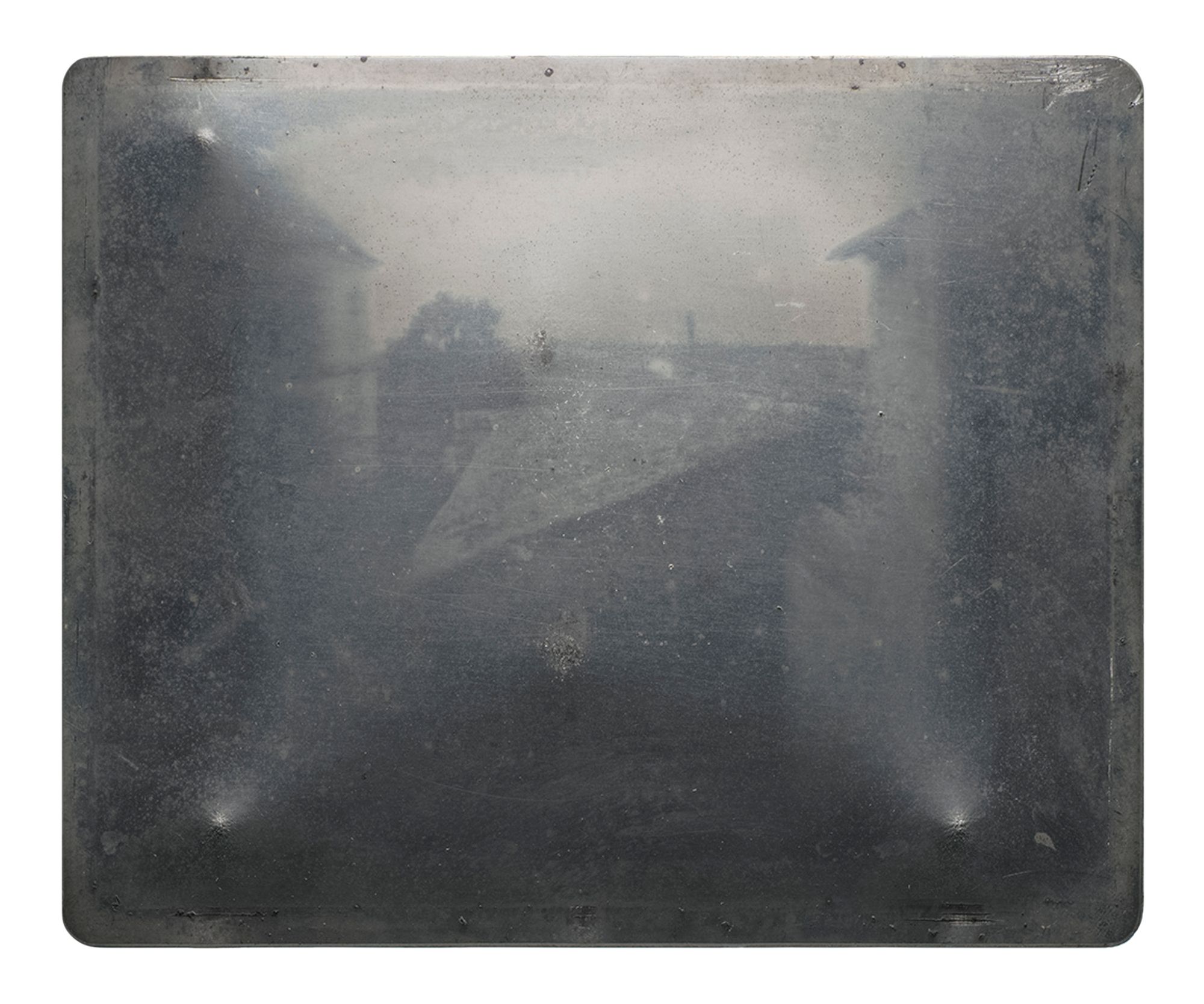
Joseph Nicéphore Niépce, a French inventor, continued Wedgwood's work and developed a technique for creating permanent images using a camera obscura and a photosensitive material. In 1826, he produced the world's first photograph, a blurry image of the view from his window, using a process he called "heliography."
Niépce's work caught the attention of Louis Daguerre, another French inventor, who worked with Niépce to improve the photographic process. Together, they developed the daguerreotype, a photographic process that produced detailed, sharp images on a silver-coated copper plate. The daguerreotype was widely popularized and quickly became the dominant photographic process in the 19th century.
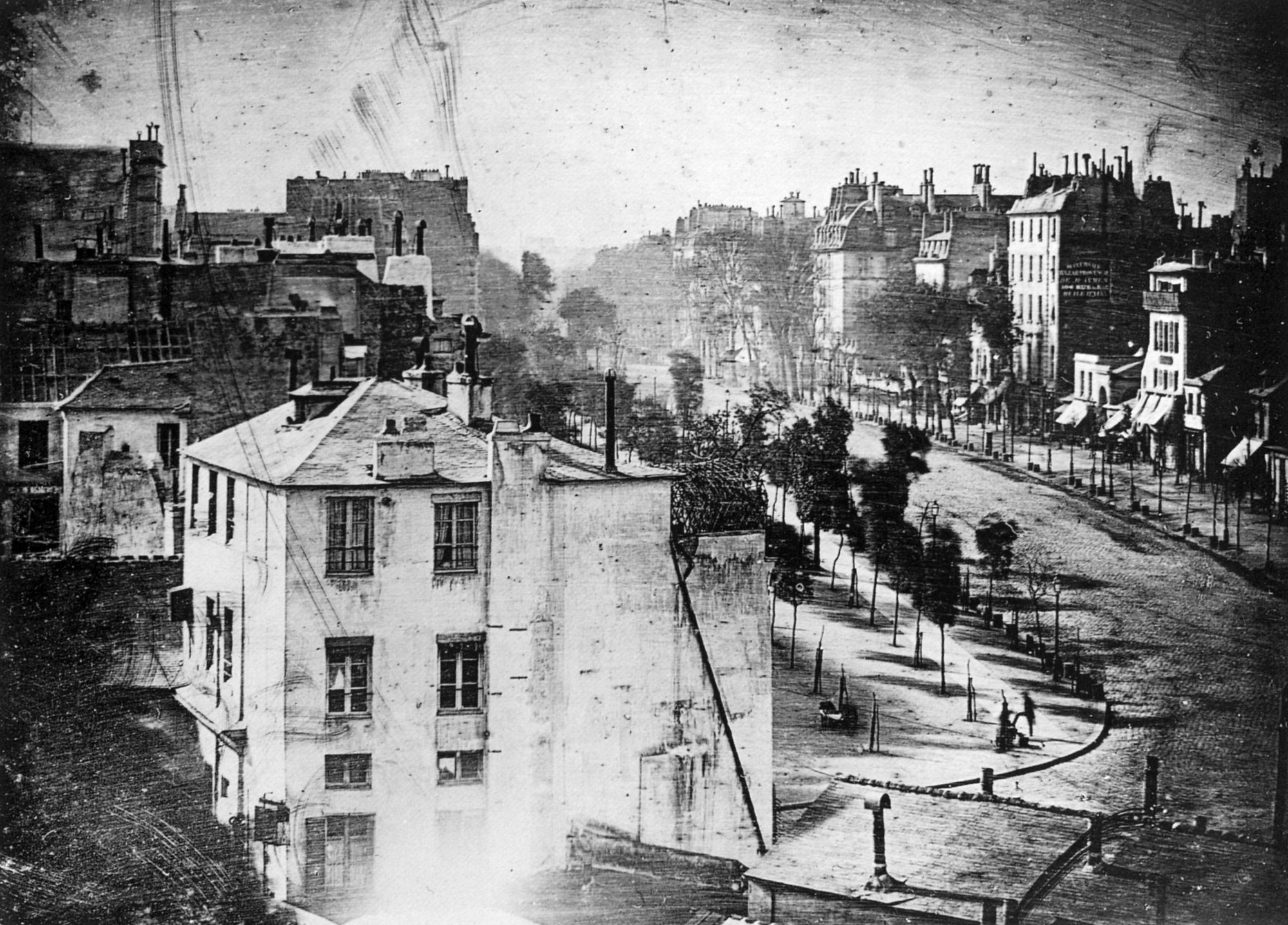
Miss Meteyard's book about Thomas Wedgwood also contains a theory linking Daguerre's discovery of the Daguerreotype process with Wedgwood's silver pictures. The theory suggests that Dominique Daguerre, an agent of Josiah Wedgwood who shared the same surname as Louis Daguerre, may have been Louis Daguerre's father and may have witnessed some of Wedgwood's experiments on light and heat during a visit to Etruria.
However, this theory is based on a series of guesses and has no solid evidence to support it. In fact, it is known that Louis Daguerre was born in 1787, which would make him too young to have accompanied his father on business tours to witness Wedgwood's experiments in 1791 or 1793, as suggested by the theory. The biographical dictionaries also suggest that Louis Daguerre's father was a rural functionary, rather than a Paris shopkeeper or trader. Therefore, the theory linking Daguerre's invention with Wedgwood's experiments remains a myth.
The invention of photography was a significant milestone in the history of human communication and visual arts. It allowed people to capture and preserve images of their world, and it paved the way for the development of new technologies such as film and digital photography.
The contributions of Thomas Wedgwood and Joseph Nicéphore Niépce in the early stages of photography are a testament to the ingenuity and curiosity of human inventors, and their legacy lives on in the billions of photographs that are taken and shared every day.
So the next time you snap a photo with your smartphone, remember that it all started right here in Stoke-on-Trent!
Thank you for reading!
If you like what you have read, please feel free to support me by sharing this article, following and signing up for my newsletter and/or buying me a coffee!
Thank you.

I use the British Newspaper Archive to help with my research and you can sign up for a free trial here.
If you are interested in your local and family history, you can sign up for a free trial of Find my Past and access all archived local records and find your past.
If you are interested in the history of Thomas Wedgwood then check out this book on Amazon
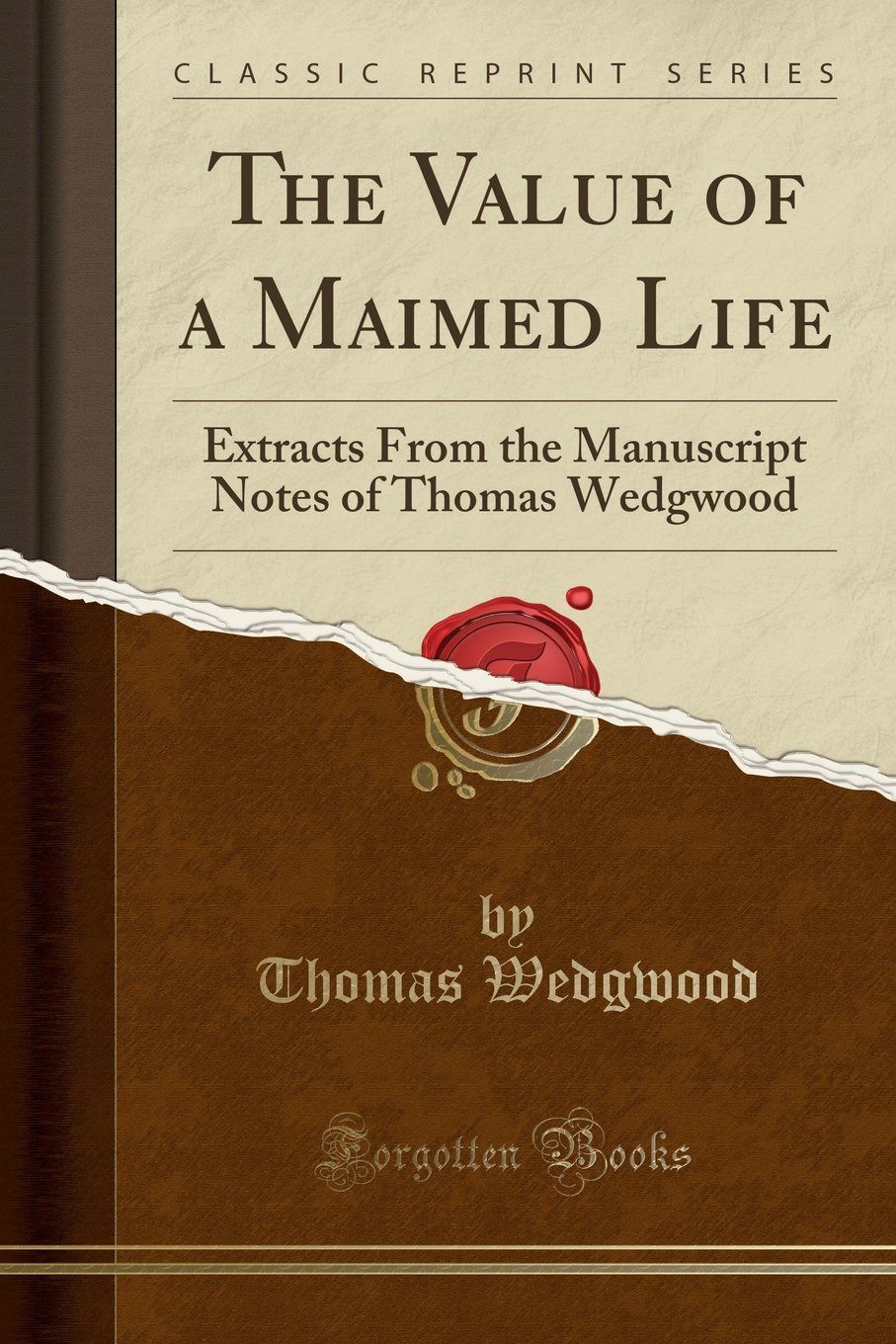
The Value of a Maimed Life: Extracts From the Manuscript Notes of Thomas Wedgwood (Classic Reprint)
by Thomas Wedgwood
Check out my recommended reading list
